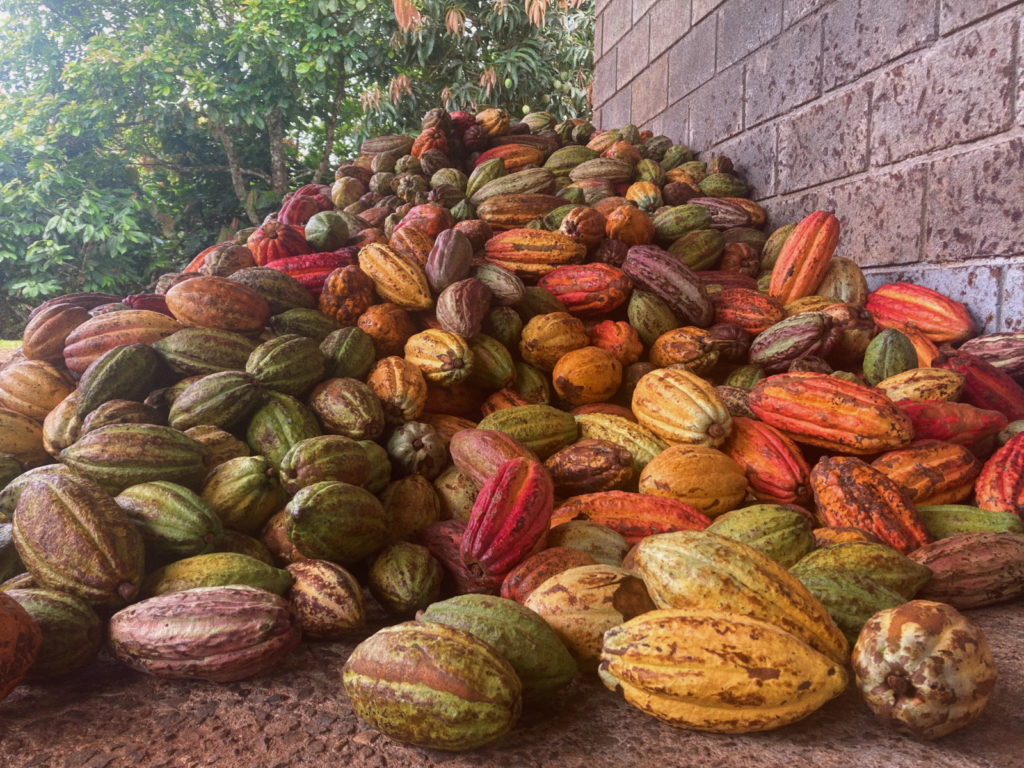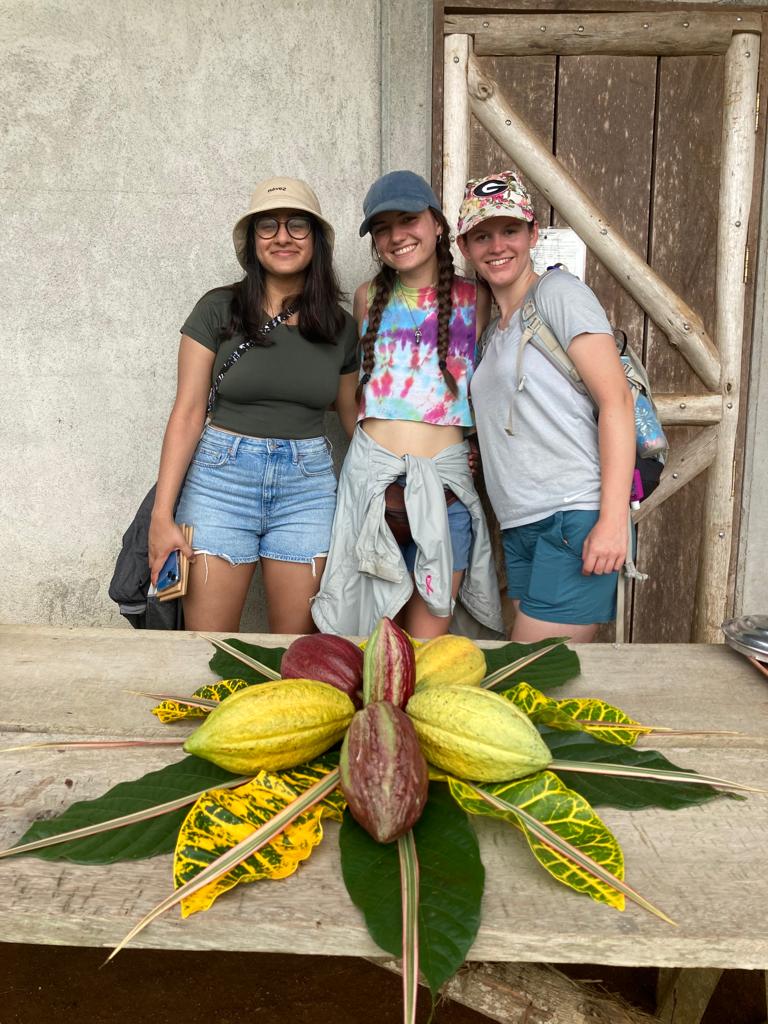One of my favorite aspects of the Choco-Rica study abroad program was being able to taste farm-fresh cacao fruit. When I first applied to the program, I was expecting to learn about chocolate and the process of making chocolate, but there was so much about that process that I was unaware of. I knew what a cacao pod looked like because I had seen it in images before, but I honestly didn’t know you could eat it fresh. I also had no idea what the inside actually looked, smelled, and tasted like. Throughout this trip we visited several different cacao farms and were able to taste fresh cacao of many different varieties on each farm. Originally, I had thought that the cacao pod was just filled with cacao beans which needed to be roasted before consumption, however, there is actually a white mucilage which surrounds each bean and the mucilage is actually the part of the fresh fruit that is consumed. The mucilage is typically sweet, and the flavor profile varies depending on the cultivar so it was a great experience to be able to taste so many different types. Not only is the mucilage a great snack, it is also a very important aspect of the fermentation process needed to make chocolate. The sugars in the mucilage feed the bacteria which helps to ferment the beans. After the beans are fermented, the mucilage no longer surrounds the beans, and the beans go on to the next step of the chocolate making process which would be drying and roasting. Experiencing the taste and flavor profile of fresh cacao can actually help determine the flavor of chocolate made from the same variety. Having the opportunity to interact with fresh cacao fruit was one of my favorite hands-on learning experiences from this trip.


